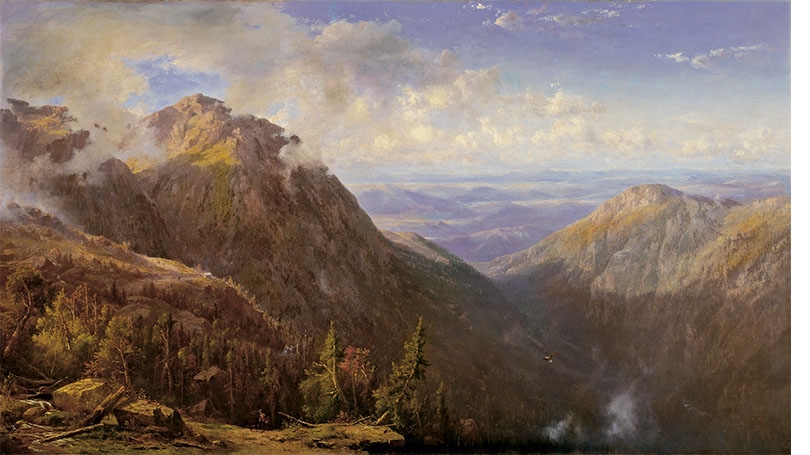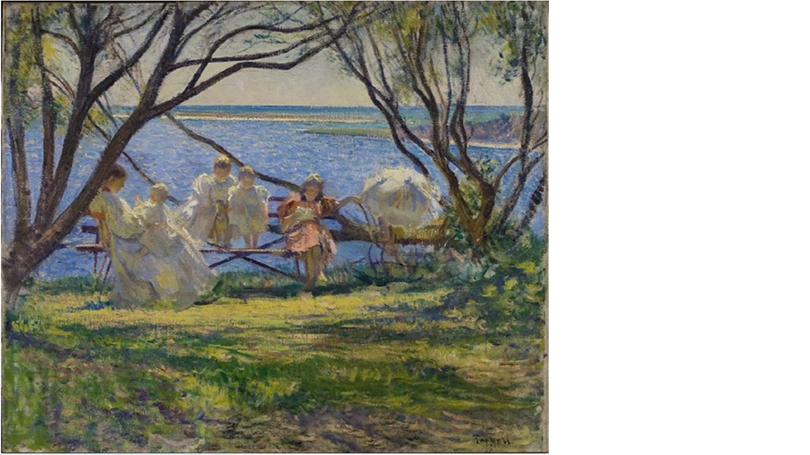Experience the Hood Museum's collection in new ways while listening to music. Visitor Services Guide Matthew Cretzmeyer paired three works of art with music.
reconstitution1_ap_002.jpg
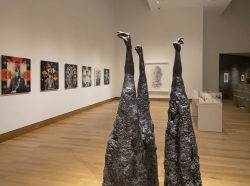
Rising up out of the ground, earthy formations gradually transform into human arms and hands. There is something very primal, dark, and cold about the base of the figures rising out of the ground that demands silent contemplation. This feeling is also found in the sparseness of Blind Willie Johnson's "Dark Was the Night, Cold Was the Ground". The raw human emotion is evident in his voice, even though the lyrics are indiscernible, making it a good soundtrack for thinking about and getting lost in Koh's dark and mysterious work.
Image: Terrence Koh, My Path to Heaven, Are You Blind Bastard God, 2007, wax, styrofoam, plaster, paint, remnants of incense sticks, mineral oil, Eau d'Orange Verte by Hermes.
p-961-1_001_2.jpg
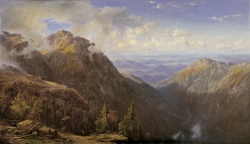
To me, "Drift" by The Gglitch sounds a bit like what flying must feel like, and this painting provides an ideal view for this feeling. The title "Drift" is nearly synonymous with flying or floating, and I am all but certain that evoking this feeling was the artist's intent. The steady rhythm of the acoustic guitar rolls like clouds on a slow summer day, and the chimes and slide guitar float over the rhythm like a warm breeze. All of the elements of the song combined give a feeling of being out in the great wide open, moving with the breeze . . . What better place to do so than in Gignoux's fantastic White Mountains landscape? You can even hear the soaring raptor in the painting screech in the recording.
Image: Regis Francois Gignoux, New Hampshire (White Mountain Landscape), about 1864, oil on canvas.
tarbell.jpg
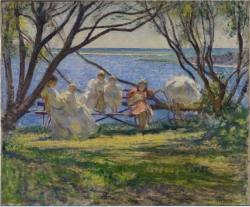
This painting presents a beautiful, idyllic waterside scene that many in the United States at the turn of the century could only have dreamt or written about. In traditional African American song, the river Jordan represented a symbolic land that lies not only between this world and the next, but also between the harsh realities of injustice in parts of the world (namely, the southern United States) and the relative peace of others, perhaps captured in this work. The simple beauty of the Carter Family's folk music puts the soul at ease and makes the listener yearn for a simpler time. It is easy to imagine that the body of water in Tarbell's painting is in fact the legendary River of Jordan or that the angelic children pictured might in fact be the heavenly choir mentioned in the song.
Image: Edmund C. Tarbell, My Family at Cotuit, about 1900, oil on canvas.
"Look and Listen" is a collaborative playlist project. Think of how your own favorite songs could fit with a work of art and share a playlist with us on any social media platform by tagging @HoodMuseum or using the hashtag #HoodMuseum.
Written by Matthew Cretzmeyer, Visitor Services Guide at the Hood Museum of Art

